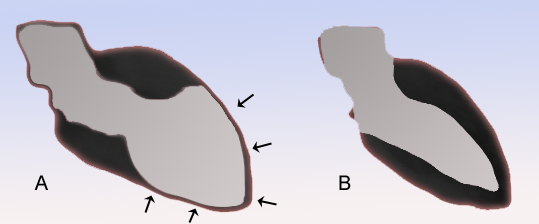Takotsubo, The ‘Broken Heart Syndrome’, Can Also Be Triggered By Extreme Happiness And Joy

It really is possible to die from a “broken heart,” but it’s also possible to die from the opposite: a heart so full of joy that it triggers the same condition as broken heart syndrome. In new research published in the European Health Journal, scientists found that extreme happiness could put just as much of a strain on your heart as severe distress or grief, leading to a condition known as takotsubo syndrome (TTS), or takotsubo cardiomyopathy.
The condition doesn’t occur gradually; rather, it happens suddenly during a moment of intense emotion, weakening the heart muscles and causing the left ventricle of the heart to expand at the bottom while the top remains narrow. The resulting shape of the ventricle resembles a Japanese octopus trap — hence the name, takotsubo. Symptoms include chest pain and shortness of breath, similar to a heart attack, but TTS can also lead to fatal arrhythmias, stroke, or heart failure.

TTS was first discovered in 1990 by Japanese researchers, and since then it has been linked mainly to negative emotions like stress, anger, fear, or sadness. In fact, researchers have found a correlation between an increase of the syndrome and major natural disasters around the world. In 2014, a study found that broken heart syndrome cases rose sharply following Tropical Storm Irene in affected states in the U.S.
In the latest study, the researchers used data from the International Takotsubo Registry at the University Hospital Zurich in Switzerland to examine the emotional events that triggered TTS. A total of 485 patients had an emotional trigger for their TTS; some four percent of these experienced a happy event before the heart condition occurred. These happy events included birthday parties, weddings, or surprise parties. The majority of cases — 96 percent — were triggered by sad or stressful events. Interestingly, 95 percent of people in the emotional trigger groups (whether sad or happy) were women, shadowing past research that has found the condition mainly occurs in older women.
The researchers also found there was a physical difference in cases triggered by happy emotional events; “happy heart” patients were more likely to experience an expansion in the mid-ventricle compared to the left ventricle in "broken heart" patients.
“We have shown that the triggers for TTS can be more varied than previously thought,” said Dr. Jelena Ghadri, a resident cardiologist at the University Hospital Zurich and an author of the study, in the press release. “A TTS patient is no longer the classic ‘broken hearted’ patient, and the disease can be preceded by positive emotions too… Our findings broaden the clinical spectrum of TTS.”
In addition, the study results may offer clues about emotional events beyond TTS, such as the general mind-body connection. “[The findings] suggest that happy and sad life events may share similar emotional pathways,” Ghadri noted, adding that “[w]e believe that TTS is a classic example of an intertwined feedback mechanism, involving the psychological and/or physical stimuli, the brain and the cardiovascular system. Perhaps both happy and sad life events, while inherently distinct, share final common pathways in the central nervous system output.” The researchers will continue to study the mechanisms behind different emotional triggers involved in TTS.
Source: Ghadri J, Sarcon A, Diekmann J, Bataiosu D, Cammann V, Jurisic S. Happy heart syndrome: role of positive emotional stress in takotsubo syndrome. European Heart Journal. 2016.



























